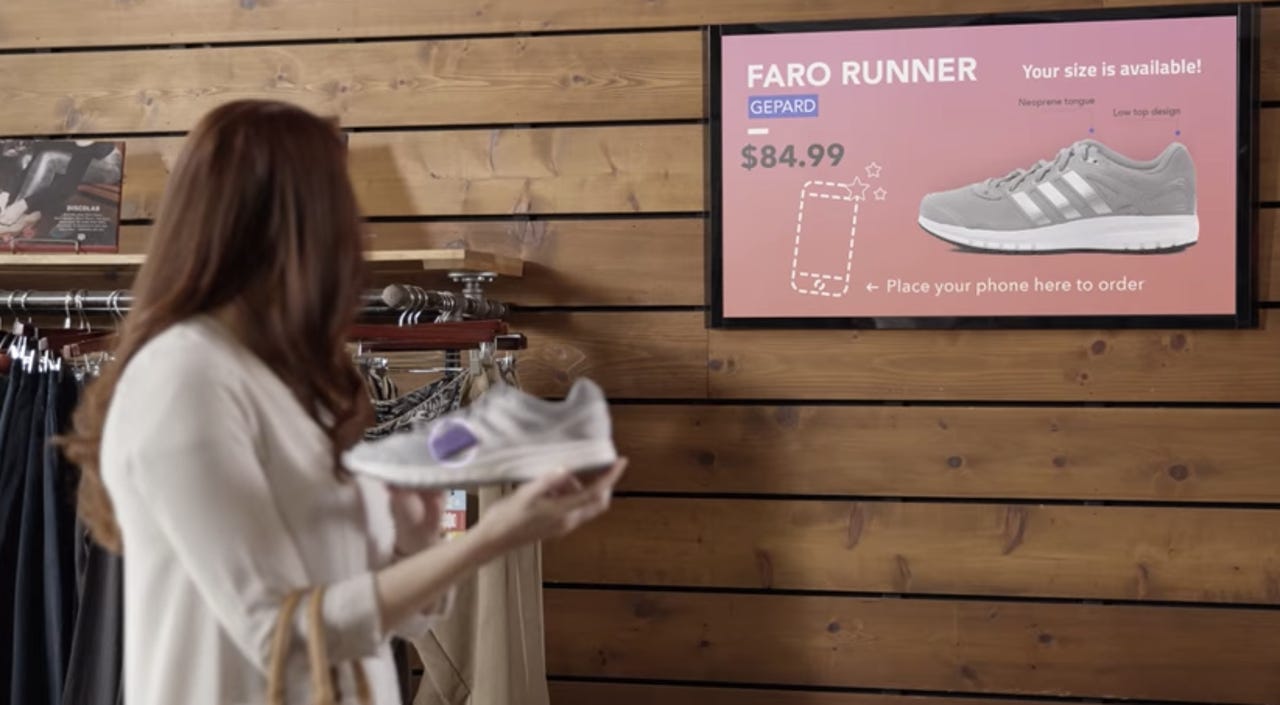Estimote's new beacon tech turns public video screens into personalized displays


Image: Estimote
Low-energy Bluetooth beacons have emerged as one of the more innovative ways businesses are gathering information about consumers and sending personalized content in brick-and-mortar environments. But for the most part, the technology has relied on consumers and their smartphone screens to make it truly effective.
This is what Estimote, a technology startup out of Poland, is hoping to change with its new beacon-based product Mirror. Launched today, Mirror is essentially a dongle that plugs into the USB or HDMI port on a publicly displayed video screen. Using nearby beacons to communicate with apps powered with Estimote's SDK, Mirror can determine if someone passing by a video screen is an active app user and can immediately adjust the screen's display with content tailored to that specific person.
The Estimote Mirror plugged into a video screen.
Even without an app installed, Mirror can communicate with Estimote Beacons through Estimote Stickers, which are tiny, 3mm thick accelerometer and temperature sensors. These stickers allow Mirror to know if a person is near certain merchandise or has handled a specific product, and then display content in real time based on those behaviors.
According to Estimote, this is the first time beacons will be used to send tailored content to any video screen within someone's view, not just through their own phone. Estimote president Steve Cheney says this concept of freeing beacon-based content from the confines of the smartphone is part of the logical evolution of beacon technology.
Featured
"Our vision for physical spaces is that they should adjust to who is around them," Cheney said. "In order to do that you need a connectivity link between a person, place, or object and a screen. As displays become cheaper and cheap sensors are deployed everywhere, this will happen at a scale unimaginable."
Bluetooth beacons first arrived on the scene in 2013 when Apple released the iBeacon specification, and since then a number of players have entered the space and built entire businesses around the bet that these kinds of location-sensing devices will eventually reach ubiquity and change the way people interact with what's around them.
Most of the well-reported beacon applications thus far have been retail based, but Cheney said only about 40 percent of Estimote's business comes from retailers. The rest of its customers come from a variety of industries and include Virgin, the Guggenheim museum, the London Tube, and 70 percent of Fortune 100 companies. It's in these non-traditional environments where Cheney said most of the innovation around beacon technology has occurred.
"Some of these customers move faster than retail so they help us to define and streamline use-cases that may ultimately take a strong foothold in retail," he said.
With Mirror, Estimote envisions applications not just in retail, but in public places with display ads, in smart cities, arenas, and museums, and even office parks and campuses. In an airport, for instance, you could be walking past a video monitor and then see a message pop up saying, "Natalie, the gate for your Denver flight has been changed. Head to C14."
"It's all very early for contextualized information to respond to our behavior," Cheney said. "We're used to it now with the iPhone in our pocket. What people don't always realize is that it's that phone combined with tiny cheap beacons that can contextualize everything else. In outdoor and urban areas, people have been focused on advertising, but the smartest people and developers are focusing more on consumer value."
Estimote says it has more than 75,000 developers using its platform, and that the Mirror integration takes "just a snippet of code." The company expects to ship Mirror around December 1.
SEE ALSO: How the quiet rise of beacons has reshaped retail marketing | Fathom Hub transforms Bluetooth beacons into IoT managed networks | Rite Aid deploys proximity beacons in more than 4,500 US stores | How Opera's latest Android test build brings home the Bluetooth beacon | Target tests beacons in 50 stores, plans nationwide expansion | Google challenges iBeacon with open format Eddystone | What is Apple iBeacon? Here's what you need to know